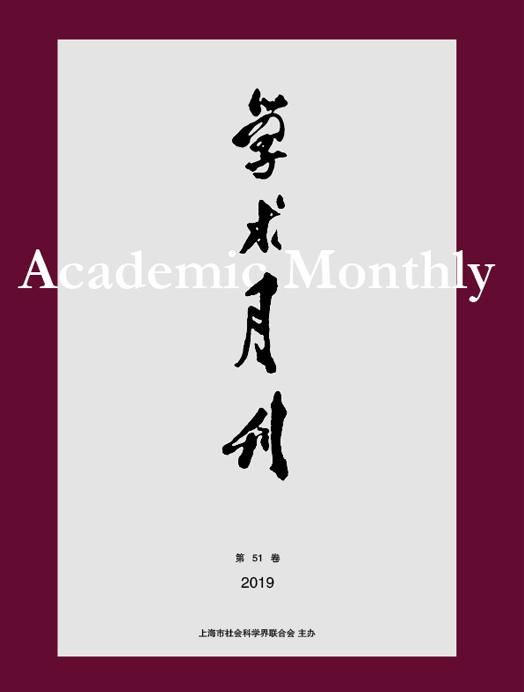Citation:
Shengming ZHU. The Frontier People in Qin and Han Dynasties and the Evolution of “the Fugitive” and “the Barbarians”[J]. Academic Monthly, 2022, 54(4): 183-196.

The Frontier People in Qin and Han Dynasties and the Evolution of “the Fugitive” and “the Barbarians”
-
Abstract
In Qin and Han Dynasties, the frontier fortresses were given the function of restricting the entry and exit of fugitives, but the phenomenon of border crossings in the north still often occurred. Among them, the escape of the frontier people is the most representative. At that time, the Northeast beyond the Great Wall, based on the basic historical facts of the masses of frontier people escaping out of the border and the concept of the HuaYi distinction, two paths of identity evolution of “ the frontier people-the fugitives-the barbarians” were formed. After the frontier people crossed the border and became “ the fugitives”, apart from being distinguished from the local “barbarians” as “Chinese”, they were also identified and constructed as “barbarians” under different spatial and temporal backgrounds. On the identification of “the fugitives” and “the barbarian” and the explanation of their relationship, it has both profound historical background and significant practical factors.
-

-
References
-
Access
-
-
[1]
NING Zhenjiang
. . Academic Monthly,
2024, 56(1): 203-209.
-
[2]
Rong MA
. “Barbarian” Domination in the Core Area in the History of Cultural and Political Interactions in China. Academic Monthly,
2019, 51(2): 167-175.
-
[3]
MENG Yanhong
. The Grading and Classification System of Han Dynasty Laws—— Further Discussion on the System of Qin-Han Laws. Academic Monthly,
2023, 55(9): 170-182.
-
[4]
Daren LAI
, Yuanyuan ZHANG
. Literature of Human and the People’s Literature. Academic Monthly,
2021, 53(1): 172-182.
-
[5]
Yuhong HU
. Reasonable Partition: The Necessary Separating Space in Maintaining Human Dignity. Academic Monthly,
2021, 53(12): 106-120.
-
[6]
. . Academic Monthly,
2017, 49(06): 59-73.
-
[7]
Qing TAO
, Xiaomeng NIU
. Reentry “Culture-Human” and Remodeling Earth-bounded Theory. Academic Monthly,
2019, 51(7): 76-90.
-
[8]
Yi ZHAI
. The Transition of Relationship and Value between the Administrative Subject as Franchisor and the Object of Franchisee. Academic Monthly,
2019, 51(6): 78-93.
-
[9]
Yongjia LIANG
. Ethnic Ontology: “Our People” Vs. Orang Asli of the Chewong, Malaysia. Academic Monthly,
2022, 54(10): 164-175, 199.
-
[10]
FENG Xianliang
. . Academic Monthly,
2018, 50(8): 170-184.
-
[11]
Wenfang WU
, Jie LIU
. The Transformation of “Individual” in the Era of New Technological Revolution and the Response of Social Law. Academic Monthly,
2021, 53(8): 106-122.
-
[12]
TIAN XIAO
. Ma Rufei’s Legends and the Generating of Modern Storytellers’ Ideal Personality. Academic Monthly,
2019, 51(3): 171-184.
-
[13]
Xianliang FENG
. People as the Core of Clan: The Kingship Network and Political Changes of the Qian’s Family in Weitang During the Transition Period from Ming to Qing Dynasties. Academic Monthly,
2019, 51(7): 149-163.
-
[14]
. . Academic Monthly,
2017, 49(11): 18-39.
-
[15]
Li’na JIN
. Marx and Arendt on the Jewish Question. Academic Monthly,
2021, 53(3): 27-34.
-
[16]
Jilin XU
. The Historical World and Spiritual Ethos of the Radical Intellectuals in Late Qing. Academic Monthly,
2021, 53(5): 202-216.
-
[17]
Xudong HOU
. A Thick Description of Cao Quan’s Home Information in Cao Quan Tablet from the Eastern Han Dynasty. Academic Monthly,
2022, 54(7): 181-195.
-
[18]
WANG Yun
. Lu Xun‘s Two Stances on Judging Artistic Justice. Academic Monthly,
2023, 55(9): 131-141.
-
[19]
. . Academic Monthly,
2016, 48(03): 5-12.
-
[20]
,
. . Academic Monthly,
2016, 48(06): 148-152.
-
-



 沪公网安备 31010102003103号
沪公网安备 31010102003103号 DownLoad:
DownLoad: